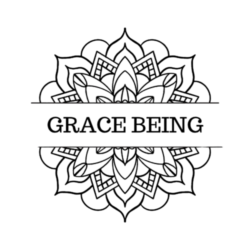Shadow Work Exercises for Personal & Spiritual Growth
Shadow work exercises can shed light on the most hidden layers of our psyche, leading to profound personal and spiritual growth.
My own path of healing and awakening seemed complete until I delved deeper and discovered aspects of myself that lay untouched and in need of healing.
This realization sparked a deep passion for shadow work, highlighting its pivotal role in integrating the rejected parts of our being.
Carl Jung, the pioneering psychologist, first introduced the concept of the ‘shadow‘ to represent these unseen aspects of our personality.
Through shadow work exercises, we embrace a powerful tool for self-discovery and healing. Our shadow self guides us to embrace our full selves and unlock a more authentic and fulfilling existence.
What Are Shadow Work Exercises?
Shadow work exercises stem from Carl Jung’s profound insight into the human psyche. He introduced the idea of the ‘shadow’—the parts of ourselves we often ignore or deny.
These exercises are practices designed to explore, understand, and integrate these hidden aspects into our consciousness.
Engaging with our shadow self offers numerous benefits:
- Self-awareness: Illuminates the parts of ourselves we’ve neglected or suppressed.
- Emotional healing: Helps resolve internal conflicts and past traumas.
- Authenticity: Encourages living more honestly and fully as ourselves.
- Improved relationships: By understanding ourselves, we navigate relationships with more empathy and less projection.
Shadow work’s transformative potential is profound. It’s not about eliminating our shadow, that’s impossible. Our shadow is an integral part of who we are. But, by acknowledging it and offering love, compassion, and understanding, we reduce its disruptive power.
When ignored, our shadow might surface in surprising and often harmful manners. The tale of Dr. Jekyll and Mr. Hyde is the perfect example. It tells a story where a respected doctor transforms into his dark alter ego, embodying the consequences of repressed aspects of oneself. This contrast serves as a vivid reminder of the shadow’s desperate plea for acknowledgment.
Regular shadow work practice doesn’t eradicate the shadow but softens its need to ‘scream’ for attention or ‘burst out’ after being repressed. This ongoing process of awareness and integration ensures our shadow becomes a source of strength, not a hidden disruptor.
Getting Started with Shadow Work Exercises for Beginners
Facing one’s inner demons, fears, and insecurities is no easy task and may not always be enjoyable. This journey is not for the faint of heart, yet it remains essential for personal growth and transformation.
Let’s start by exploring these shadow work exercises for beginners:
Beginner-Friendly Exercises
Exercise 1: Dialogue with Your Shadow
- Find a quiet moment and a comfortable space.
- Think of a trait you dislike in others, which might reflect a denied part of yourself.
- Write a letter to this aspect of your shadow as if it’s another person. Ask it questions.
- Allow your intuition to respond in writing, letting your shadow communicate its needs and feelings.
Exercise 2: The Mirror Technique

- Stand in front of a mirror in a private, calm space.
- Look into your eyes and observe the thoughts and feelings that arise.
- If you start noticing self-negative comments, get curious about your inner-critic and approach it with compassion.
- Speak affirmations of acceptance and understanding to yourself, acknowledging all parts of you.
Exercise 3: Shadow Meditation
- Sit in a comfortable position in a quiet space.
- Close your eyes and take deep breaths, reaching a state of relaxation.
- Envision a safe space where you can encounter your shadow. Picture yourself digging a hole in the ground, one of Carl Jung’s shadow work exercises. Or imagine yourself diving into the deep, dark abyss of the ocean. This space is where you’ll meet your shadow, ready for communication.
- Ask your shadow what it wants you to know. Listen without judgment.
- Thank your shadow for its message and slowly return to your surroundings.
Remember, shadow work is a personal journey. What resonates with one person may not with another. Be gentle with yourself and honor your unique path to self-discovery.
Considering the depth and complexity of this work, it’s highly recommended to have a Jungian analyst as a guide. They can offer support and guidance, helping you navigate and integrate the insights from your shadow work safely and effectively.
Deepening Your Practice with Advanced Shadow Work Exercises
For those who feel prepared to delve deeper, advanced shadow work prompts and questions can offer a more intense exploration of the self. You can try these exercises for shadow work upon completing the foundational techniques.
Advanced Exercises to Explore
1. Role-Reversal Dialogue
Engaging in role-reversal dialogue allows you to ‘become’ your shadow, giving voice to parts of yourself usually silenced.
This exercise can be eye-opening, revealing hidden desires, fears, and motivations. By writing or speaking as your shadow, you confront these elements directly, fostering empathy and understanding for the aspects of yourself you might struggle to accept.
2. Dream Analysis
Dreams serve as a mirror to our unconscious, making dream analysis a powerful tool in shadow work. By maintaining a dream journal and reflecting on the symbols and scenarios presented, you can uncover the messages your shadow is trying to communicate.
This practice requires patience and openness to interpret the often cryptic language of the unconscious mind. A professional Jungian analyst can help you dig deeper and decode the messages your unconscious is trying to communicate with you through personalized and collective symbols and meanings.
3. Art Therapy

Art therapy offers a non-verbal mode of exploring your shadow. It’s a way of using creative expression to manifest the intangible aspects of your inner world.
Through drawing, painting, or sculpting, you can externalize and confront emotions and traits that are difficult to acknowledge. This process not only brings shadow elements to light but also helps in processing and integrating them in a gentle, therapeutic manner.
Integrating Shadow Work Journal Exercises into Your Routine
Journaling is a cornerstone of shadow work, providing a private space for self-reflection and emotional processing. This practice helps in articulating thoughts and feelings, making the intangible aspects of the shadow more concrete and manageable.
Benefits of Journaling in Shadow Work
- Clarity: Writing helps clarify thoughts and emotions, revealing underlying patterns and beliefs.
- Catharsis: Journaling offers an emotional release, a safe place to express feelings without judgment.
- Insight: Reflecting on your entries can lead to profound insights about your shadow and overall psyche.
Shadow Work Journal Exercises
- What emotions am I currently avoiding and why?
- Recall a recent situation where I overreacted. What might this reveal about my shadow?
- What traits in others irritate me the most, and what could this indicate about my denied aspects?
- Describe a dream I had recently. What symbols stood out, and how might they relate to my shadow?
- Think of a person I have a strong negative reaction to. What qualities of this person might be reflecting parts of my shadow?
These are just a few examples of shadow work journal exercises. For a more comprehensive list and guide on shadow work prompts, feel free to check out my extended collection.
Maintaining a Consistent Journaling Practice
Incorporating shadow work journal exercises into your routine can significantly enhance your journey towards self-awareness and integration. This practice makes the elusive aspects of your shadow more accessible and transformable.
Here are some tips to help you be consistent with this practice:
- Routine: Set a regular time for journaling, whether it’s daily or weekly, to build a habit. I make it a point to write in my journal at least once a month, creating 12 chapters by year-end for reflection. More often than not, I find myself writing weekly, drawn by the relief, catharsis, and clarity it brings!
- Environment: Choose a comfortable and quiet spot for journaling where you feel at ease and undisturbed. This will help you get in touch with your inner being and get into the flow of writing.
- Self-Compassion: Approach your journaling with kindness and without self-criticism. Remember, this is a process of exploration and understanding, not judgment.
- Review: Periodically look back on your entries to reflect on your growth and the patterns that emerge over time.
Carl Jung’s Influence on Shadow Work Exercises
Carl Jung’s theories laid the groundwork for modern shadow work practices, emphasizing the importance of acknowledging and integrating these hidden aspects for personal growth.
Jung’s work emerged in the early 20th century, a time ripe with psychological exploration. He believed that confronting our shadow was crucial for achieving wholeness. This idea remains highly relevant, offering insights into personal and collective behavior.
Inspired by Jung, many shadow work exercises encourage dialogue with the shadow self, using techniques like:
- Role-playing conversations with one’s shadow.
- Dream analysis to uncover shadow elements.
- Artistic expression to give form to the shadow.
These practices reflect Jung’s emphasis on creative and introspective methods to bridge the conscious and unconscious mind. By engaging in these exercises, you embark on a transformative journey, uncovering the depth of your psyche as envisioned by Jung.
Overcoming Common Challenges in Shadow Work Exercises
Shadow work is a deeply personal journey, and each individual’s path can vary significantly. Reflecting on my own experience might shed some light on common challenges and potential solutions.
Discovering the Shadow
Initially, my understanding of the shadow was purely theoretical, derived from books. The reality struck during an inner child visualization, revealing a intense and overwhelming feelings I hadn’t anticipated.
Navigating Intense Emotions
This revelation was like opening Pandora’s box, leading to a tumultuous period of about nine months. The intensity of the emotions encountered can be startling, resembling my own struggle during this time.
Personal Strategies for Support
- Professional Guidance: Consulting a Jungian analyst was a pivotal step in my journey, offering insights that were instrumental in navigating the shadow’s depths.
- Diverse Practices: I found solace and progress through a combination of activities, including reading, journaling, exercises for shadow work, visualizations, and somatic practices like Yin Yoga and ecstatic dancing.
- Self-Compassion and Patience: The journey through shadow work is seldom linear. Embracing patience and kindness towards oneself is crucial, as I learned through my own experiences.
- Seeking Community: Connecting with others who are also exploring their shadow self can provide mutual support and understanding.
While my path included these specific challenges and solutions, everyone’s experience with shadow work is unique. It’s about finding what resonates with you and allowing your journey to unfold at its own pace with grace.
Final Thoughts
Trying out on shadow work exercises is a courageous step towards profound self-awareness and personal growth. This journey invites you to explore and integrate the hidden facets of your being, leading to transformative healing.
Key Takeaways:
- Patience and Self-Compassion: Essential virtues in navigating the complexities of shadow work.
- Personal Journey: Each individual’s path is unique, with its own challenges and revelations.
- Professional Guidance: Seeking support from a Jungian analyst or therapist can provide valuable insights.
- Diverse Practices: Incorporating a variety of exercises enriches the experience and fosters deeper understanding.
- Community Support: Connecting with others on similar paths can offer encouragement and shared learning.
For more insights on Carl Jung’s work, explore these related resources:
Carl Jung & Religion: Exploring Jung’s Perspective on God
Is Shadow Work Dangerous?
FAQs on Shadow Work Exercises
Practicing shadow work involves introspective activities like journaling, meditation, and dialoguing with oneself to uncover and integrate repressed parts of your personality. It’s a process of self-exploration and acceptance, often enhanced with professional guidance.
Shadow work exercises can include writing letters to oneself, engaging in role-reversal dialogues, or using creative expression like art to give form to hidden aspects. These practices help in acknowledging and understanding the shadow self.
Finding your shadow involves observing emotional reactions, projections onto others, and exploring dreams or fantasies for clues about repressed parts of your psyche. It’s a journey of noticing what triggers you and questioning why, revealing your shadow aspects.






